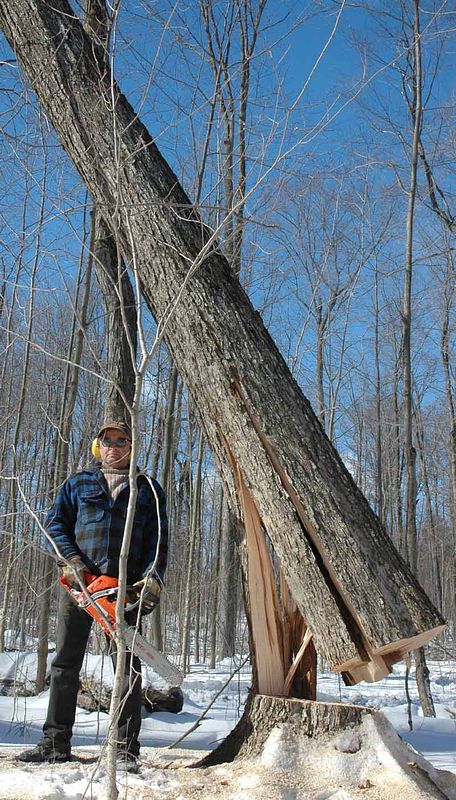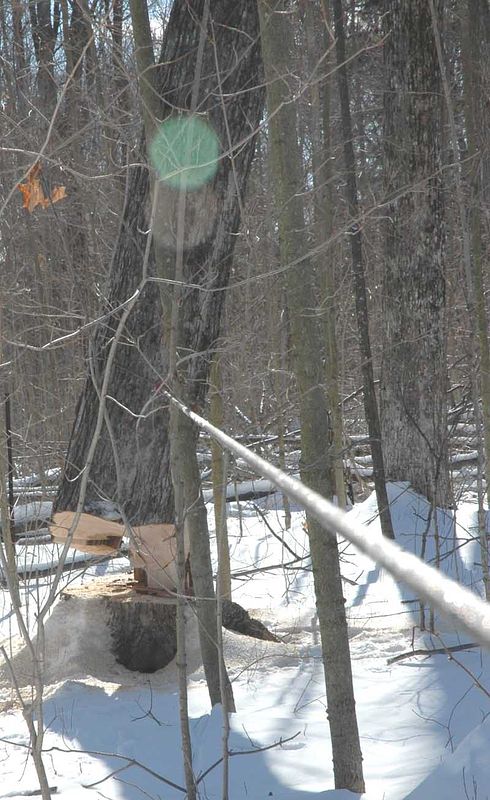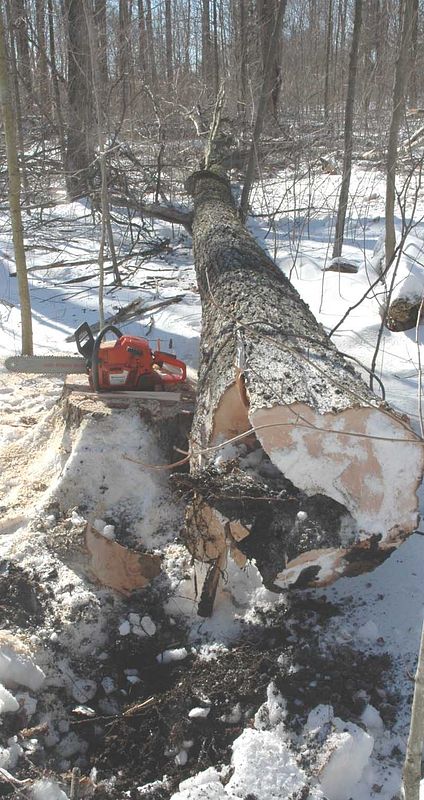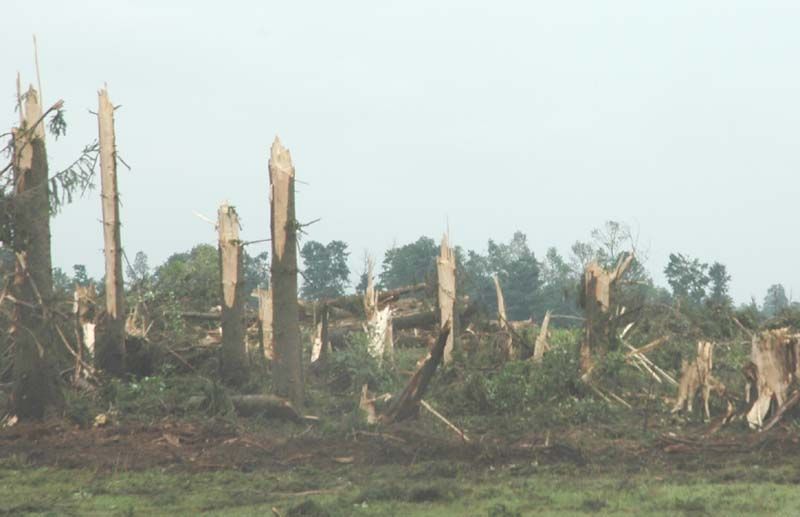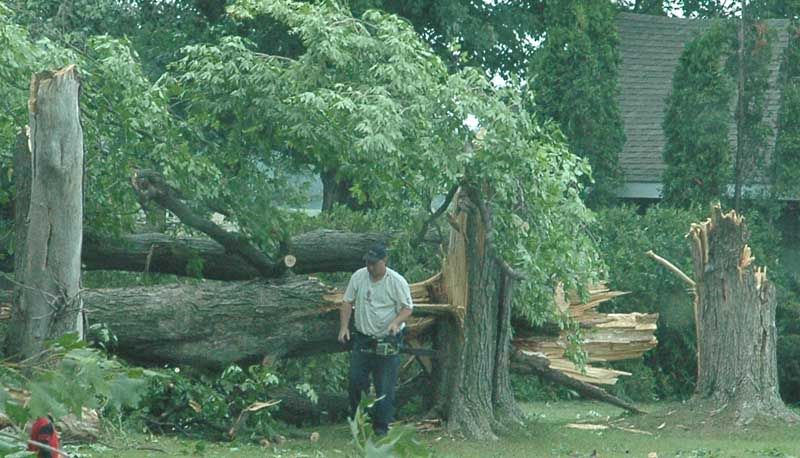barber chair questions
Freakingstang:
"was around two inches on the 1st tree and about 1 inch on the 2nd. The ash started to move, then barbered. The cherry didn't move before it barbered."
Your first tree could have been from a thin Dutchman kerf closing quickly. But not your second. I've had perhaps too much confidence in the plunge back-cut to avoid a barber chair. After listening on this site I'm making sure I do a plunge face bore from now on. I believe one should consider that cut for both the plunge or triangle cut.
Among the primary cause of barber chairs that are listed under various sources:
1) Dutchman,
2) Shallow and or narrow face,
3) Face cut ‘matching up’ with a split in tree,
4) Back cut not at correct height to face,
5) Driving Wedges too hard or unnecessary wedging,
6) Wind,
7) Pulling a tree,
8) Improper hinge wood width,
9) Failing to nip corners or bore out center of hinge,
10) Not placing binders,
11) Defect in tree,
12) One tree leaning into or being fell into another, (look, that 2nd tree
could still cause you plenty of problems if it chairs),
13)
Barber chair avoidance includes many options:
a) Consider a deep/high face and make sure no Dutchman,
b) Consider a face bore in the center holding wood,
c) Consider one of two techniques on the back-cut|
First; bore(plunge the back/bring it forward to the desired holding wood)
then toward the back, then chase a 3"-5" strap.
Second; triangle the back, making sure to nip the holding wood at the
corners, then in from the back with a sharp saw, not letting up.
d) Wrapping the tree to stop the split, best to go with two, above head high
e) Consider cutting the corner holding wood even with the plunge,
f) Don't wedge a leaner that you are falling with the lean at all,
g) Don't drive wedges hard on trees/species that you know have a chair
tendency without having done a face bore or holding wood corner nip.
h) Get your holding wood right for that particular trees size/weight/lean(s)/
limbs/wind/defect(s)/dryness and other variables.
i) Don't fall certain trees with a wind that could be that lever that enhances
the splitting potential,
j) Don't let Jim/Bob pull real hard on that line from the tree top to the
back of his pick-up.
k) Make sure that a split in a tree doesn't match up with face where the
face comes up a couple inches short and parallel to that split.
l)
From Tree Sling'r, paraphrased: My hinge wood was 1 inch wide … the reason this tree barber chaired; it was a Doug Fir combined with wedging to counter a lean. Doug Fir; … many times your hinge needs to be narrower than a pine or white fir. If I would have expected a barber chair I would have bored a little bit of wood out from the middle of the tree through the face cut and would also have made a deeper undercut.
Doug fir is … so tough.
Sooooo. Know what you’re cutting and consider that face bore.
From John Ellison in Arkansas, paraphrased: The weirdest one was a spruce in Alaska. It never had a saw cut in it … the hook tender had just rigged a lift tree. It was not topped. Two 11" blocks, two chokers and two sections of haywire were hanging from the tree. He had just taken off the belt and spurs … we heard a noise and the tree barber chaired from some fault inside starting at 5 feet. No wind at all.
Sooooo. Don’t believe that OSHA web site that says that barber chairs occur during just the latter part of the fall.
From Jim in the Mid-west, paraphrased: I had a poplar split a week ago or so,
had a good 30 degree lean on it. I fell it with the lean, bore cut the back,
maybe 1" wide hinge wood, still split.
Sooooo. Don’t depend on just that back bore, it can make for a precise hinge, but the continuity of that hinge needs to be broken up.
What did I forget or misstate?


